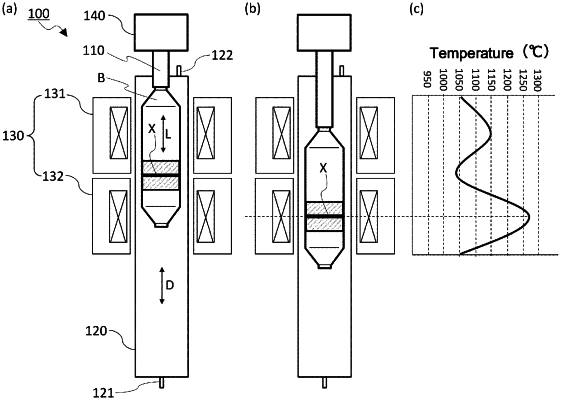| CPC C03B 37/01853 (2013.01) [C03B 37/0146 (2013.01)] | 4 Claims |

|
1. A sintering method of porous glass base material for optical fiber, using a sintering apparatus comprising:
a furnace core tube containing the porous glass base material whose longitudinal direction is along an axial direction of the furnace core tube; and
a multi-stage heater in which two or more heaters, each of which can control the temperature independently of each other, surround the furnace core tube and are arranged in the axial direction of the furnace core tube to form a heating area in the furnace core tube,
wherein the sintering method includes:
heating the porous glass base material in the heating area to perform a first dehydration process; and
after the first dehydration process, moving the porous glass base material to position the porous glass base material in the longitudinal direction such that a location in the porous glass base material where dehydration was identified as being most insufficient by a predetermined method is at a position in the axial direction of the furnace core tube where the temperature is highest in the heating area, and then further heating the porous glass base material in a second dehydration process,
wherein, in the further heating of the second dehydration process, the porous glass base material is repeatedly reciprocated in the axial direction of the furnace core tube around the location in the porous glass base material where dehydration was identified as being most insufficient by the predetermined method, and
after the first and second dehydration processes, heating and sintering the porous glass base material at a temperature higher than a temperature at which the second dehydration process is performed.
|